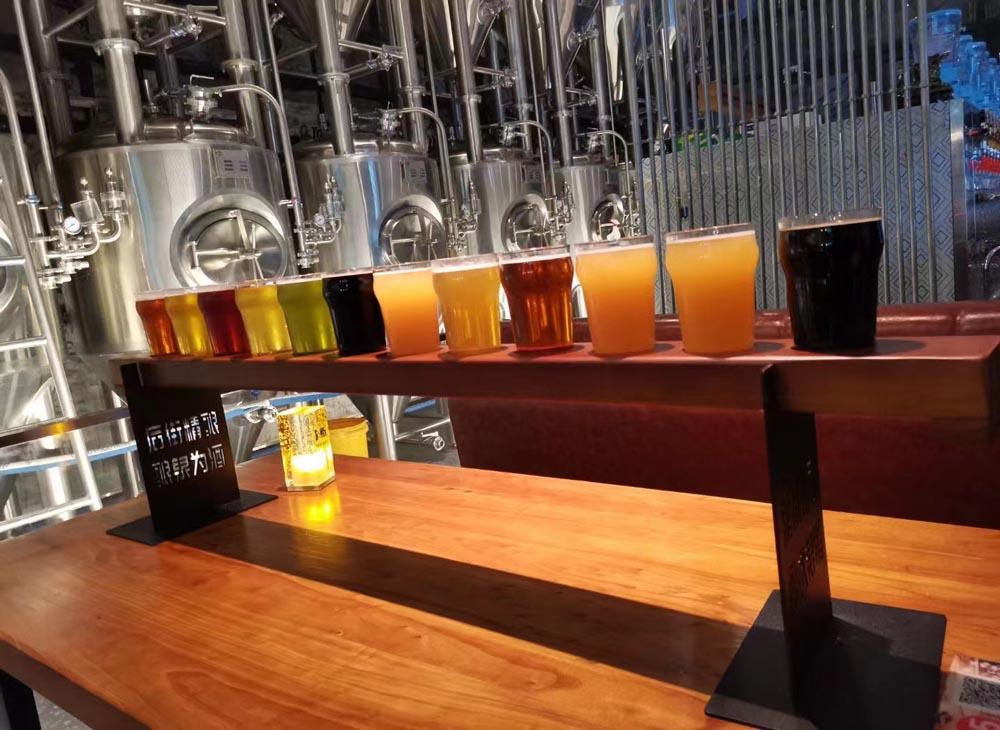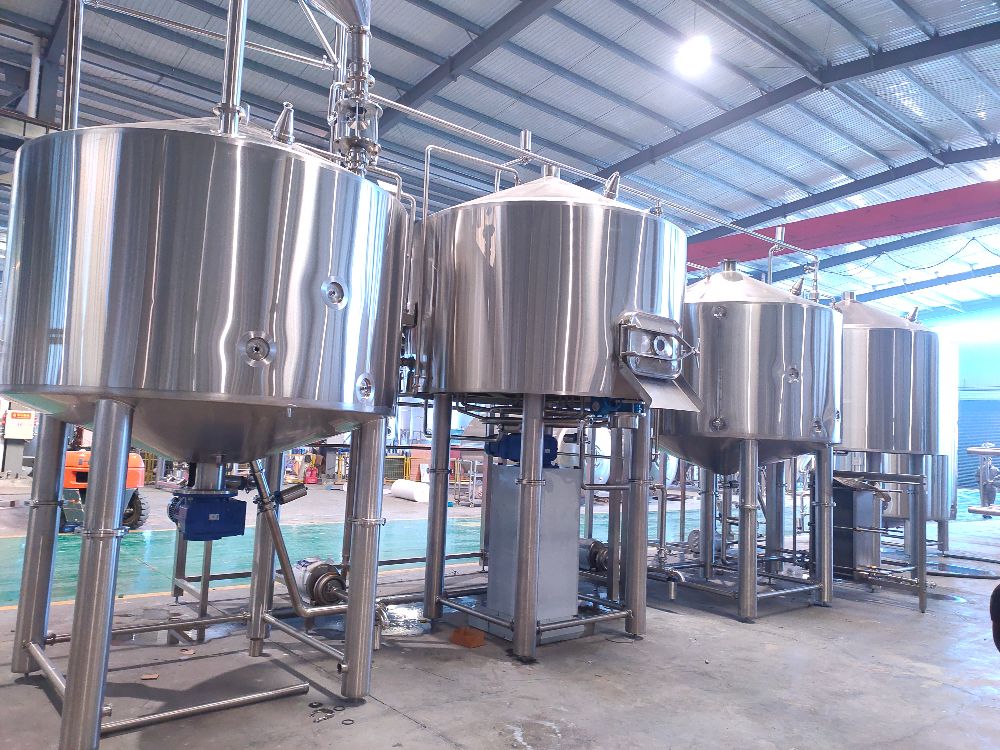How Do I Know If My Beer brew is Fermenting?-- Part II
- Feb 19, 2022
- 187
- tiantai
New Beerbrewers that aren’t yet sure of the process will likely wonder how to know if their Beerbrew is fermenting, how long it takes to start fermenting, and the common signs they should be watching out for. Personally, I constantly worried that my batch was ruined anytime the fermentation process didn’t start as quickly as I thought it should. As such, I thought it would be the perfect topic to tackle today!

This continues from the last article. Please read the 2ed parts as below related to the beer fermentation tanks.
Check for the most common fermentation signs
Every batch of beer is going to ferment a little differently, but most will display the same tell-tale signs of fermentation at one point or another. Sometimes, it takes longer for them to appear, or maybe it’s more or less intense. Still, they will happen!
Bubbles coming out of the airlock
This is typically what everyone is taught to look for as a sign of active fermentation and it certainly can be the most fun to watch and experience while making beer.
I remember during my first batch I was absolutely stunned that so much was happening inside the beer that had just been boiling on my stove some hours before. There were bubbles, foam, and LOTS of activity. Of course, that same batch later blew the airlock out of the hole in the fermenter and I had a giant mess on my hands.
Still, it was awesome.
Airlocks exist to allow the CO2 being created during fermentation a chance to escape the fermenter without letting any outside air back inside. Typically, you’ll have a little sanitizing solution inside the airlock so that there is no chance bacteria can find its way to your beer. If your yeast are right on track with their process, bubbles coming out of the airlock is one of the best ways to tell. It’s definitely the best way to see active fermentation if you have an opaque fermenting vessel such as a white bucket.
Even if you aren’t seeing a violent display of gas escaping your fermenter, any bubbles escaping is an excellent sign. Just because the bubbles slow down or seem to stop completely, however, don’t assume that fermentation has stopped! Always take a couple of final gravity readings a few days apart to ensure that your beer has truly finished doing it’s thing – you don’t want active fermentation to be going on inside your bottles or you might have some bottle bombs on your hands. Plus, beer typically tastes better when the yeast has had plenty of time to clean up after themselves.
Swirling particles inside the beer
With all of the CO2 being created by the yeast, the inside of a fermenter can become a very volatile place. It’s not uncommon to see clumps of yeast or protein swirling around inside the beer. The yeast will eventually clump together to form the krausen (yeast cake) on top and the protein will fall out of the solution to form the trub at the bottom.
This sign is particularly visible if you have a very light-colored beer and your fermenter is in a room with a little light in it. Don’t be discouraged if you can’t see anything swirling with a darker beer!
Still, it’s super cool to have your own beer snowglobe swirling around!
Yeast cake (krausen) forming on top of the beer
As the yeast grow and multiply inside your beer, eating up all of the sugar, it’s very common for them to clump up together into a yeast cake. This yeast cake, called the krausen, typically floats up on top of the beer, at least for a while, and looks exactly how you would imagine it would: a gooey clump of yeast.
Importantly, just because you don’t see a krausen forming doesn’t necessarily mean that something is wrong.
While it is common to see a yeast cake at the top, the yeast could also easily become broken up and fall down into the beer mixture as well. Plus, the krausen usually breaks apart eventually anyway and settles to the bottom as the yeast finish up the fermentation process.
Trub forming at the bottom of the fermenter
I mentioned earlier that eventually the proteins in the beer will clump up and fall out of solution.
These proteins, yeast spent after the fermentation, hope material, and various other things will all eventually collect at the bottom of your fermenter to form what is known as the trub.
Trub can be a great sign of active fermentation because it can’t really form unless fermentation has already started occurring. Unfortunately, the trub won’t really be visible at all if you are using an opaque fermenter, but clear ones will work best.
Last Thoughts
If you got through with your brew day and have been freaking out about not seeing fermentation, I hope that this little breakdown has helped to calm your nerves.
Worst case scenario, you will need to pitch more yeast after around 36 hours have passed and you haven’t seen any signs of activity. If it hasn’t been that long, then just RDWHAHB (Relax, Don’t Worry, Have a Beerbrew)

This continues from the last article. Please read the 2ed parts as below related to the beer fermentation tanks.
Check for the most common fermentation signs
Every batch of beer is going to ferment a little differently, but most will display the same tell-tale signs of fermentation at one point or another. Sometimes, it takes longer for them to appear, or maybe it’s more or less intense. Still, they will happen!
Bubbles coming out of the airlock
This is typically what everyone is taught to look for as a sign of active fermentation and it certainly can be the most fun to watch and experience while making beer.
I remember during my first batch I was absolutely stunned that so much was happening inside the beer that had just been boiling on my stove some hours before. There were bubbles, foam, and LOTS of activity. Of course, that same batch later blew the airlock out of the hole in the fermenter and I had a giant mess on my hands.
Still, it was awesome.
Airlocks exist to allow the CO2 being created during fermentation a chance to escape the fermenter without letting any outside air back inside. Typically, you’ll have a little sanitizing solution inside the airlock so that there is no chance bacteria can find its way to your beer. If your yeast are right on track with their process, bubbles coming out of the airlock is one of the best ways to tell. It’s definitely the best way to see active fermentation if you have an opaque fermenting vessel such as a white bucket.
Even if you aren’t seeing a violent display of gas escaping your fermenter, any bubbles escaping is an excellent sign. Just because the bubbles slow down or seem to stop completely, however, don’t assume that fermentation has stopped! Always take a couple of final gravity readings a few days apart to ensure that your beer has truly finished doing it’s thing – you don’t want active fermentation to be going on inside your bottles or you might have some bottle bombs on your hands. Plus, beer typically tastes better when the yeast has had plenty of time to clean up after themselves.
Swirling particles inside the beer
With all of the CO2 being created by the yeast, the inside of a fermenter can become a very volatile place. It’s not uncommon to see clumps of yeast or protein swirling around inside the beer. The yeast will eventually clump together to form the krausen (yeast cake) on top and the protein will fall out of the solution to form the trub at the bottom.
This sign is particularly visible if you have a very light-colored beer and your fermenter is in a room with a little light in it. Don’t be discouraged if you can’t see anything swirling with a darker beer!
Still, it’s super cool to have your own beer snowglobe swirling around!
Yeast cake (krausen) forming on top of the beer
As the yeast grow and multiply inside your beer, eating up all of the sugar, it’s very common for them to clump up together into a yeast cake. This yeast cake, called the krausen, typically floats up on top of the beer, at least for a while, and looks exactly how you would imagine it would: a gooey clump of yeast.
Importantly, just because you don’t see a krausen forming doesn’t necessarily mean that something is wrong.
While it is common to see a yeast cake at the top, the yeast could also easily become broken up and fall down into the beer mixture as well. Plus, the krausen usually breaks apart eventually anyway and settles to the bottom as the yeast finish up the fermentation process.
Trub forming at the bottom of the fermenter
I mentioned earlier that eventually the proteins in the beer will clump up and fall out of solution.
These proteins, yeast spent after the fermentation, hope material, and various other things will all eventually collect at the bottom of your fermenter to form what is known as the trub.
Trub can be a great sign of active fermentation because it can’t really form unless fermentation has already started occurring. Unfortunately, the trub won’t really be visible at all if you are using an opaque fermenter, but clear ones will work best.
Last Thoughts
If you got through with your brew day and have been freaking out about not seeing fermentation, I hope that this little breakdown has helped to calm your nerves.
Worst case scenario, you will need to pitch more yeast after around 36 hours have passed and you haven’t seen any signs of activity. If it hasn’t been that long, then just RDWHAHB (Relax, Don’t Worry, Have a Beerbrew)

.jpg)


